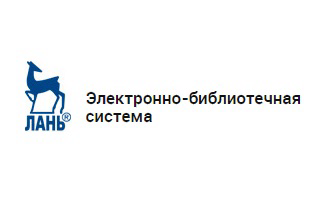| УДК 550.837 | DOI: 10.21440/0536-1028-2019-8-58-67 | Download |  |
Borisov A. V., Vinogradov V. B. Electrodynamic model of a storage pond dam. Izvestiya vysshikh uchebnykh zavedenii. Gornyi zhurnal = News of the Higher Institutions. Mining Journal. 2019; 8: 58–67. DOI: 10.21440/0536-1028-2019-8-58-67
Abstract
Introduction. Geophysical exploration at a brine storage pond dam of Mirny Mining and Processing Division (MPD) were carried out in order to provide safe operation. A new approach to electrical logging data interpretation is based on past records generalization.
Research aim is to create a forecast electrodynamic model of a storage pond dam.
Research methods included thermometry (measurements in the network of thermometric wells), piezometry (water level measurements in observation wells), land surveying (dam surface releveling), electrical resistivity tomography (aerial electrical exploration at a dam), and visual observations at a dam.
Results and analysis. The regularities in electrical resistivity (ER) variation were determined at diff erent depths in the three parts of a dam which were distinguished by the technogenic impact. Quantitative assessment of ER variations in diff erent part of a dam was given depending on the thawing process time and the temperature of the environment. Calculation results and their interpretation were analyzed with the account of geological structure features of a hydraulic engineering structure.
Summary. The principles of forming a forecast electrodynamic model were created. A model for one storage pond dam was built as an example. The development of a generalized model for hydraulic engineering structures is possible if data from several sources is stored.
Key words: storage pond dam; electrical resistivity tomography; thermometry; forecast; electrodynamic model.
Acknowledgements. The authors thank A. V. Zyrianova, A. V. Morov, and A. V. Kuzin for materials, help, and friendly remarks.
REFERENCES
1. Savich A. I., Kuiundzhich B. D. (eds.) Integrated engineering and geophysical exploration when
building hydraulic engineering structures. Moscow: Nedra Publishing; 1990. (In Russ.)
2. Borisov A. V., Vinogradov V. B. Applying geophysical methods to investigate hydraulic engineering
structures. In: Theory and practice of geological interpretation of gravitational, magnetic, and electrical
felds: collection of studies. Issue 1(46). Perm: IM UB RAS, PSU Publishing; 2019. p. 51–54. (In Russ.)
3. Eskin A. Iu., Dzhurik V. I., Serebrennikov S. P., Bryzhak E. V. Dynamics of a physical condition of
the weakened zones of a bulk dam of irkutsk hydroelectric power station during 2002–2012. Uspekhi
sovremennogo estestvoznaniia = Advances in Current Natural Sciences. 2016; 12-2: 387–394. (In Russ.)
4. Kolesnikov V. P., Konoplev A. V., Prigara A. M., Tatarkin A. V. Technology of complex geophysical
survey for diagnosis of hydraulic structures. Sovremennye problemy nauki i obrazovaniia = Modern
Problems of Science and Education. 2012; 6. Available from: http://www.science-education.ru/ru/article/
view?id=7839 [Accessed 23 June 2019]
5. Modin I. N., Bolshakov D. K., Bomkin S. V., Skobelev A. D., Baranchuk K. I., Efremov K. D.,
Pelevin A. A., Repev A. S. Developing a 3D model of the upper geological environment according to
electrical resistivity tomography data to solve engineering and geological problems. Engineering
Geophysics–2015. EAGE. 2015: 1–11. (In Russ.)
6. Velikin S. A. Using electrical resistivity tomography 3D data processing technologies when
monitoring the state of hydraulic engineering structures foundation in permafrost zone. Geofzika =
Geophysics. 2019; 1: 25–32. (In Russ.)
7. Dahlin T., Sjὅdahl P., Johansson S. Embankment dam seepage evaluation from resistivity monitoring
data. Near Surface Geophysics. 2009; 7: 463–474.
8. Sjὅdahl P., Dahlin T., Johansson S. Resistivity monitoring for leakage and internal erosion detection
at Hallby embankment dam. Journal of Applied Geophysics. 2008; 65(3–4). P. 155–164.
9. Mahmoodi O. (2016). The search for kimberlites airborne magnetic data processing in the northwest.
Athabasca Basins in Summary of Investigations. 2016. Vol. 2. In: Saskatchewan Geological Survey,
Saskatchewan Ministry of the Economy, Miscellaneous Report 2016-4.2. Paper A-6, 14 p.
10. Kjarsgaard B. A. Kimberlite pipe models: signifcance for exploration. In: Exploration in the New
Millennium. Proceedings of the Fifth Docennial International Conference on Mineral Exploration. Edited
by Milkerait B. Docennial Mineral Exploration Conferences. Toronto, Canada, 2007. P. 667–677.
11. Laskina T. A. Developing the technology of integrated electrical logging in the conditions of salt
deposits: Cand. eng. sci. abs. of diss. Perm; 2018. (In Russ.)
12. Zyrianova A. V. Study of briny slime water fltration by the method of electrical resistivity
tomography. In: 19th Ural youth scientifc school of geophysics: proceedings. Ekaterinburg: IM UB RAS;
2018. p. 69–71. (In Russ.)
13. Davydov V. A., Arzamastsev E. V., Baidikov S. V., Gorshkov V. Iu. Electrometric studies in
Krylatovskii mine. Izvestiya vysshikh uchebnykh zavedenii. Gornyi zhurnal = News of the Higher
Institutions. Mining Journal. 2019; 3: 64–71. (In Russ.)
14. Zhukov A. A. Modifying the principles of georadiolocation and ultrasonic tomography to solve
mining and geological problems in the conditions of potassium deposits: Cand. eng. sci. abs. of diss. Perm;
2018. (In Russ.)
15. Reed L. E., Witherly K. E. 50 years of kimberlite geophysics: a review. In: Exploration in the New
Millennium. Proceedings in the Fifth Decennial International Conference on Mineral Explorat. Edited by
Milkerait B. Docennial Mineral Exploration Conferences. Toronto, Canada, 2007. P. 679–689.
Received 22 July 2019









